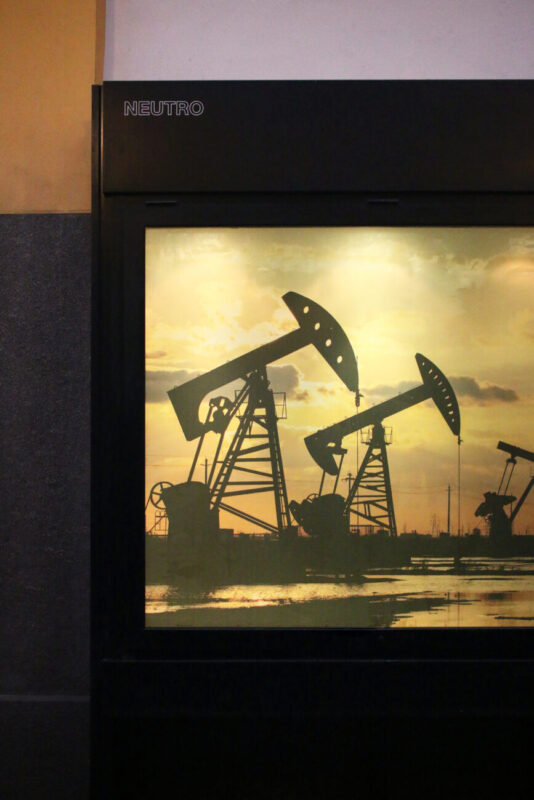Artworks by Francesco Simeti on show at Neutro until January 8
Words Gianmarco Gronchi
Housed in the commercial windows of Neutro-the space for contemporary art in Reggio Emilia-the photographs of Francesco Simeti are a disorienting reflection on the role of images and technological media. This is not the first time Simeti has worked in public contexts. For Neutro, Simeti presents the project Manufacture Uncertainty, a series of photographs retrieved from open-source image sites such as Shutterstock or Freepick. The images chosen by Simeti are object trouvée, albeit in their purely artificial dimension. Nevertheless, this “anthropological study of images” conducted by Simeti is significant in both its conceptual and political dimensions.
On the one hand, the reuse of images is rooted in Duchamp’s artistic work, moving the viewer to a reconsideration of the ways in which the photographic image is used in the contemporary age. What, of what we see, really has lasting value if everything is subject to digital dispersion? On the other hand, Simeti forces us to reflect on ecology, climate change, and the relationship between man and nature. The images chosen by the artist are technically perfect, shimmering, and seductive. Nevertheless, they introduce us to a futuristic horizon where man is forced to give up his anthropological dimension and delegate his survival to machines that he himself has built. Simeti’s images present themselves to the viewer as relics of a not-even-too-distant future, uncertain artifacts destined to remind us how the landscape has been tampered with and then abandoned by man. As Paola Nicolin writes in her contribution for the publication accompanying the exhibition, “if constant in his work is the choice of the landscape as the privileged subject, (…) the landscape is political because something is happening in there. And the image is not only image, but politics of the image”.
In other words, Simeti’s work is structured as a complex scenographic device in which he starts from nature and lands in the world of digital images and then returns to nature again. In the midst of this process, there is the viewer, who is given the task of attributing meaning to symbolic images, whose dehumanized and denaturalized visual horizon looms over our future perspectives. What do these images tell about us? And what will they tell? These “fossils of the future” show us that “the intermingling of aesthetics and new technologies has an ancient origin.”







